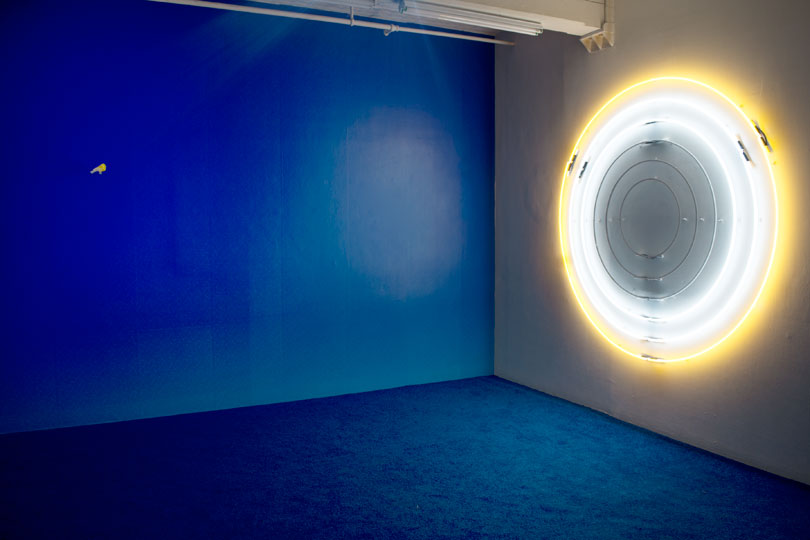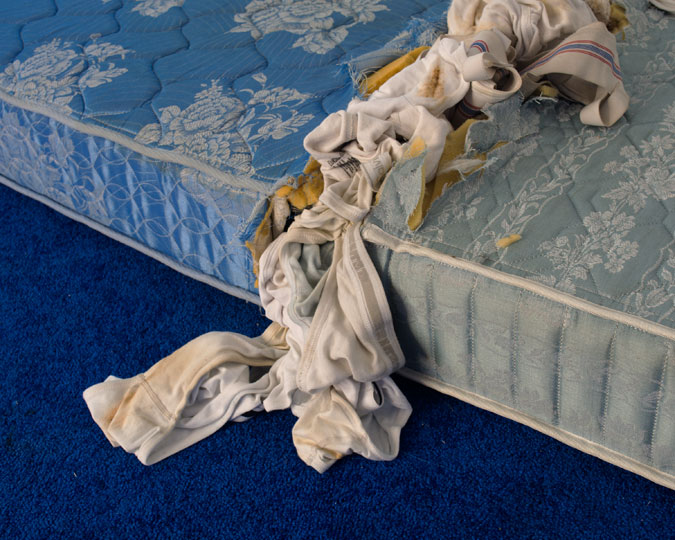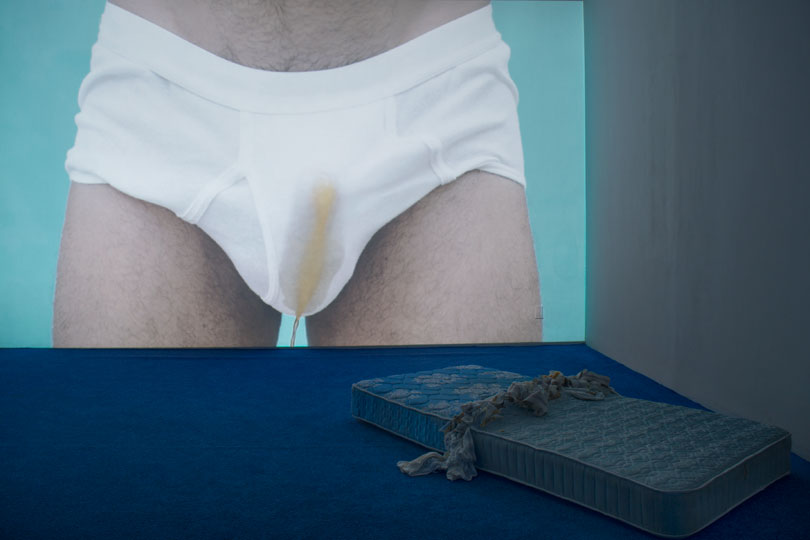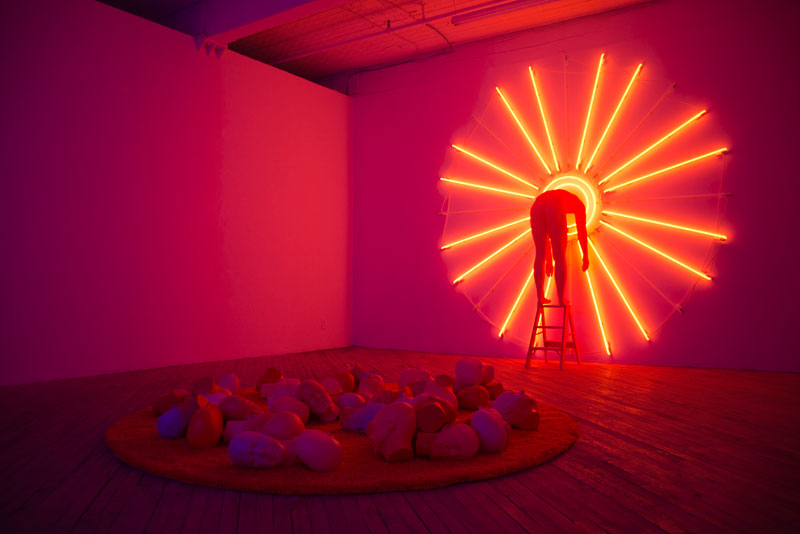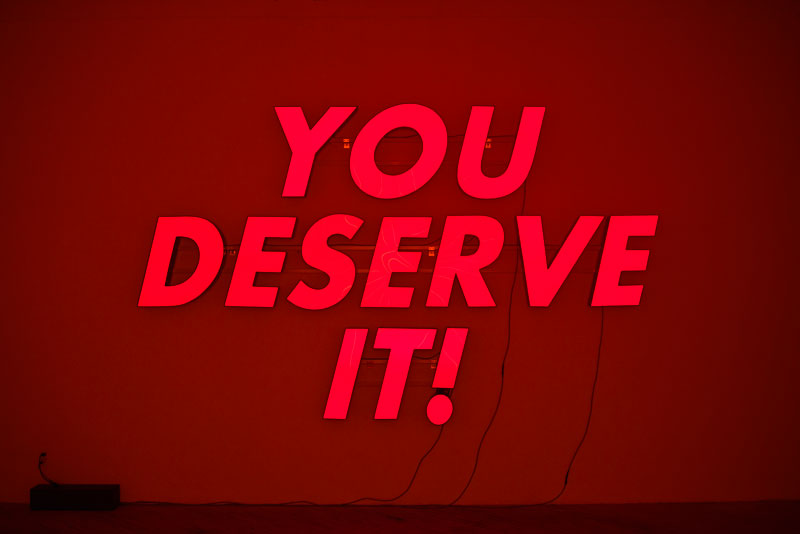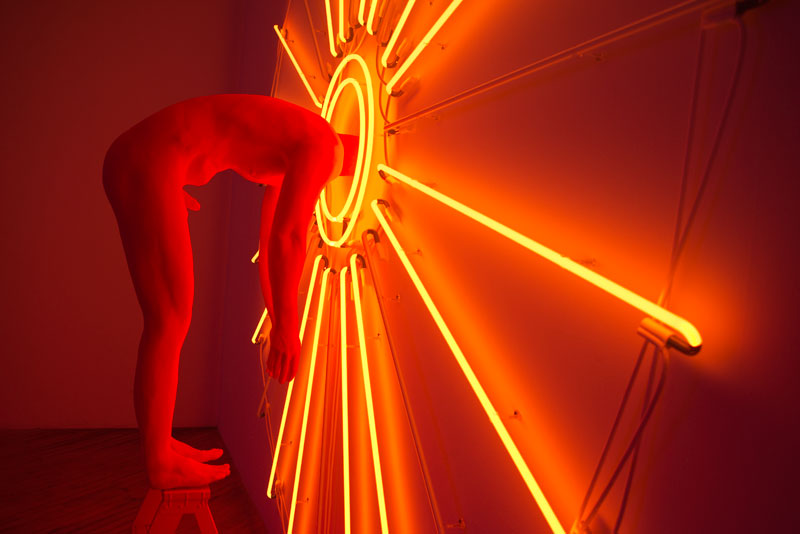Q&A: chad states
By Rafael Soldi | August 9, 2018
Chad States holds an MFA from Tyler School of Art and a BA from Evergreen State College. He is a member of Vox Populi and has been included in exhibitions at ClampArt, New York NY; Blue Sky Gallery, Portland OR; Napoleon, Philadelphia PA; Hous Projects, New York NY; Randall Scott Gallery, Brooklyn NY; Greg Kucera Gallery, Seattle, WA; Photographic Center Northwest, Seattle WA; Philadelphia Photo Arts Center, Phildelphia PA; and Delaware Center for the Contemporary Arts, Wilmington, DE. His book Cruising was published in the fall of 2011 by Powerhouse Books which was short listed as one of the best new photobooks in 2012 by Aperture Foundation and Paris Photo. He was an Artist in Residence at the Philadelphia Photographic Arts Center in 2013 as well as with Light Work in 2009.
© Chad States, from the series Cruising
Rafael Soldi: Let's start at the beginning. Your early practice was more focused around photography. In Cruising you visited public parks to photograph gray cruising spots and the men who occupy them. What attracted you to these places? What challenges did you face making this work?
Chad States: My perspective on the world has been very much shaped through my sexuality and my desires. Reflecting on this now, it is seeming to me that a lot of my thinking is tied to my coming out process. I grew up in a conservative-ish Christian family. There was a lot of shame surrounding my sexuality and my desires when I was growing up. But there was a tremendous release of the shame and negativity surrounding my sexuality during the year after I came out. And I remain interested in that moment of release, in that moment transcendence. Where once I considered my thoughts and desires to be nasty and shameful, upon coming out I had a profound shift in awareness that allowed me to transform what I once saw as disgusting into something beautiful.
With the Cruising work (and all of my subsequent work) I am trying to celebrate and make beautiful those things that are often denigrated. I used to cruise as a teen and into my early twenties and I had many tender exchanges with some of the men that I encountered in these spaces. The series is an attempt to pay homage to that experience, though there is a fine line between what I can consider a celebration and what can be seen as an expose of the men that I have photographed. This is a challenge that the work holds that I am still grappling with but also one in which I am not interested in shying away from either. The ethical challenge makes the work more potent for me. So attempting to make images that are ethically dubious but are still beautiful and romantic, was a challenge, (not to mention all the difficulties of pulling off the making of the pictures as well). Making this work taught me the powerful role that light plays in shifting how things are seen and felt.
RS: At which point did it become necessary for you to branch out your practice to include other mediums?
CS: I began to branch out into other mediums as a necessity. I had an interest in being more fluid between mediums within my work before grad school. But because I went to grad school specifically for photography I focused my interest to only photography. This focus proved useful to a point until it also began to feel too narrow. I had a moment in 2012-13 where I was feeling creatively stuck and I didn't know what I wanted to do next with photography, but at the exact same time I began to have a flood of ideas that involved other mediums and so I began to follow those ideas. I am always more interested in the ideas than in the medium itself within the work anyways. My branching out to other mediums was a necessary rupture for me to continue to create.
RS: Broadly, your work is concerned with questions of masculinity and vulnerability, which are visceral, private and nuanced. However, more specifically, you pursue these questions in a landscape of queer sex and desire, the kind that is often considered obscene. Is there beauty to be found in crassness? How do you find it?
CS: My work comes from my experience of the world and that experience is shaped through my identity as an aging white gay male. And while I am making work that is really specific to that identity demographic I am also attempting to talk about much larger universal issue of existence, to what it is to be human. My very existence to some is crass, and if I were to continue to believe that my existence is crass (and I did for some time) than I would be dead already, either physically or psychically dead. So it is necessary for my survival for me to find the beauty/poetics/sublime within the crass. But I am grateful for this opportunity in which the shame of my sexuality provided me because it made me feel my vulnerability in pronounced way. Vulnerability plays a crucial role in the creation of empathy. And empathy allows me to extend myself out of the specifics of my identity to allow me to be more human. Though this task is difficult and am always working on it.
RS: Digging deeper into vulnerability and trust as driving forces in your work. Your subject is often found exposed, in an emotional and/or physical display of his own making. A display, likely, not originally intended to be documented. You intervene a private performance, disrupting a moment previously governed by lust and desire to acknowledge the underlying fragility that holds all of it together. Nowhere is this theatre more apparent than in Love Taught Me Who Was the Boss, picturing a man after a fisting session, akin to a soldier just back from combat. Himself still making a slow return to his own body—a body in transit. What attracts you to the psychology of trust and bodies in flux?
CS: I am interested in the connection between the mind and body particularly in when that connection leads to a kind of transcendence of the self. As a gay man I know what it is like to both penetrate and be penetrated. To fuck and get fucked. For me bottoming/getting fucked is to be vulnerable. Opening yourself up so that another person can enter you is an incredibly vulnerable act, one that often takes trust. I often will need to do some work in my head in order for me to relax and become open enough to be penetrated. This openness of the mind is then reflected in the body. For me, this makes the difference between the resulting pleasure or pain from the interaction. Vulnerability is the nexus between the possibility of pleasure or pain. I am thinking now of the Tom Ford quote that "every man should be penetrated once in their lives," which I wholeheartedly agree with for the reasons I am describing. So, when I can fully open up and let go (essentially from my ego) then a great deal of pleasure can come from being fucked. With Love Taught Me Who Was The Boss, I am interested in the more extreme version of this kind of opening up, of being vulnerable and trusting. Which is why I was interested in photographing a fisting scene. The diptych depicts first the act of being fisted, which I shot by using colored lights on the subjects but pointed my camera towards the shadows of the participants in order to abstract the sexual act. I think of this first image as the mind space, where the second image then portrays the body coming down from extreme pleasure derived from its own vulnerability. I wanted to make the portrait allude to a saint or a shaman, to someone who has had a transcendent experience and knows something that I don't, knows how to trust more than I do, be vulnerable more than I do, thus a person I can learn from.
RS: We Dream Many Dreams is a complex installation. It features two used mattresses sewn together with soiled briefs and jockstraps busting out the seam; a video of a bulging brief soaked in piss; two small yellow birds, perched; and concentric neon circles, all inside an arresting blue room with blue carpet to match. All of it beautifully executed—once again, beauty and crassness. You said this was your idea of heaven. Why?
CS: Together, We Dreams Many Dreams is essentially a portrait of my relationship with my partner Andrew. I wanted to make a sacred space that spoke of our love. We live at a small beach town during the summer where are able to spend quality time together and to re-sync with each other. The installation makes reference to the summer and to landscape around us; the blue sea, the blue sky, the yellow of the sun, and the two yellow birds that return to our yard every year. This landscape is a place to dream, to imagine new possibilities together. The conjoined mattress allude to that sight of dreaming while it also references the blue of the sea and blue of the sky, two massive bodies meeting together at a horizon line. Though at the horizon line of the piece are soiled underwear and jockstraps which act as a buffer between the two separate halves but also works as glue binding them together. Over the course of the summer of 2015, my partner and I collected our soiled underwear/jockstraps that went into that piece. Here again is this idea of crassness and vulnerability. The semen, urine and fecal stained underwear become documents, artifacts that are bodies are alive. It is both disgusting and beautiful in that respect. Underwear is worn on the place where the body produces so much pleasure and shame. Usually your fecal stained underwear is something you would hide from others, but when you are in an intimate relationship these are the kind of things that are ultimately shared with each other. I find it beautiful that my partner allows himself to be vulnerable and free from shame in front of me. I believe that it is our sharing of vulnerabilities which create love. I am happy for Andrew's strengths, but that is easy, it is easy to adore someone for their strengths, I want to know my partners vulnerabilities, to soothe them, be tender to them and take care of them. This is how I know I love him. So that is why I describe the soiled underwear as a binder holding two halves together. And the video of Andrew peeing himself repeatedly I see as a generous gift, as an act of love. Pissing oneself is an act of humiliation, of shame, but in the installation I enlarge that shame and slow the frame rate down so that it becomes a sight of beauty, it transforms that shame into something sublime.
© Chad States, I've Been Thinking About Forever
RS: Talk to me about the circles. You’ve featured circles and concentric circles in many of your installations. Are they anuses, are they glory holes, are they suns? all of the above?
CS: Ha. All of the above. Even in the Cruising work there are glowing openings/orifices in the landscape. But the neon pieces are meant to read as both anus and sun expanding and radiating warmth. A heavy nod to Bataille's poem Solar Anus. These pieces are a celebration of the sun, of life, of pleasure, of opening up and feeling expansive.
RS: Your work is visual-forward, it is always an awakening of all the senses. People often ask you what it all means. Do you imbue a lot of conceptual layers in your work, or are you more interested in how the work is experienced formally? How about this question of “aboutness” vs “isness”?
CS: I believe in visual seduction first and foremost with the work. I want the work to intoxicate, as to allow the viewer to lose themselves in the spaces I create. This is the "Isness" of the work, the way the work feels, emotionally and/or psychologically. There are always a lot of conceptual layers within in the work that I am making, which is the "aboutness", as in what the work is "about". But regardless if you are privy to that information or not, I want the viewer to still feel it, to feel what the work is doing, to understand it on an emotional level or an unconscious level.
RS: What are some of the overarching themes explored in your latest installation, La Vie en Rose?
CS: La Vie En Rose deals with hope, joy, terror, judgement, shame, praise, and finding contentment amongst these dualities. The text piece "You Deserve It!" is a good starting point to the installation, "You deserve it" is a judgmental statement that both indicates praise or shame depending on how it is delivered. It is a phrase Americans constantly hear through advertisements and via politicians. The "it" makes the statement open ended. It ask you to question what is the "it" that you "deserve"? What do I deserve? Do I deserve love? happiness? joy? guilt? shame? terror? And the word "deserve" indicates something that is innately so. When tens of thousands of gay men were dying from AIDS in the 80's and 90's, an often-heard phrase from conservatives was that we deserved it. That we deserved to die for our sinful behavior and our way of being. But I also think of my own privileges and how my world view is skewed by being told that as a white male that I deserve whatever I want. I also think of this piece as a kind of mood ring that shifts on you day to day, because sometimes I feel that I do deserve to be happy and sometimes I feel like I deserve shame. It is a constant fight sometimes. "I AM THE SUN!" is the sentencing of the "You Deserve It!" judgment. It is both humiliation and transcendence. A guillotine like effect that is also glorious. You don't quite know if the condemning sentence is one of pleasure or pain. The body bent over to be fucked, perhaps for enjoyment, perhaps to humiliate. I also think about that piece in terms of denial as well, like an ostrich sticking its head in the sand, for sometimes to find joy and happiness it feels like I need to ignore 90% of what is happening in the world, a kind of willed ignorance in order to feel bliss. Untitled (Sunset) then becomes the aftermath of the sentencing. The piles of severed heads joyfully colored. It is a beautiful spectacle with a violent and disturbing edge. With that piece I wanted to try to make something where joy and terror existed together simultaneously. I made 43 severed heads for that piece, one for each time I have managed to make it around the sun, for each year spent negotiating joy and terror.
RS: What’s next for you?
CS: Currently I am prepping for a remount of La Vie En Rose that will open on August 3rd at SPACE gallery in Portland Maine. This time around the installation will include a video work in addition to the three pieces that were the original showing.
© Chad States, from the series Cruising
© Chad States, Love Taught Me Who Was the Boss
© Chad States from the installation I Feel Love
© Chad States, from the installation Together, We Dream Many Dreams
© Chad States, from the installation La Vie En Rose
© Chad States, Untitled (Sunset)
© Chad States, La Vie En Rose (Upcoming)







